Photo

0 notes
Link
Welcome to K JOY Travel STUDENT page! Knowing how thirsty you are for knowledge, and realizing also how important it is for students to have personal time to relax, socialize, and just have fun, we have customized these tours, balancing interesting historical tales and illuminating facts of our beautiful city with time for fun or relaxing. We have extensive experience working with groups such as sports teams, universities, unions, and international Erasmus students (ESN) and have developed these tours of St. Petersburg according to their feedback. Our tours are flexible, and so are we! The itineraries can be modified depending on the preferences of each group. We respect your input as we are always open to ideas and suggestions. Our goal is a happy customer and we will do our best to provide you with the best tour while meeting your budget and time constraints. We strive to make your experience here rich and rewarding at an affordable price! K JOY Travel can offer you a tour whether you arrive by cruise ship or are staying in a local hotel. We will meet you at your accommodation to take you on your selected tour, returning you in a timely manner at the conclusion of our journey. For our cruise ship customers, we offer these tours of St Petersburg as visa-free shore excursions. Please note that all students must have an ISIC (International Student Identity Card), otherwise some of the museums will charge the student as an adult. Please email us [email protected] with any questions you may have. For candid and impartial reviews or questions you may also contact Marmot Company [email protected] or site to www.marmot.ee. Since 2011 together with Marmot Company we’ve been successfully arranging tours of St.Petersburg and Moscow for ESN students. Terms of Payment You pay after the tour. We don't take any prepayments. We make all the arrangements ahead of time, but you do not have to pay anything until the end of the second day. We accept cash, Visa and Master cards. We look forward to hearing from you.
0 notes
Link
Are you planning to cruise St. Petersburg? Welcome aboard K Joy Travel! We offer a wide range of big group and private visa-free shore excursion tours in St. Petersburg for cruise ship as well as for ferry boat and river cruise passengers. Each of the tours we offer cover all the star-sights of St. Petersburg and will immerse you in Russian history and culture. As a cruise ship passenger, you will not need a visa. K Joy Travel will handle any of the required paperwork. We provide our customers with "Blanket Visas" which let you pass Russian customs and permit to participate in a supervised tour.
#Russian Tour#private tour in St. Petersburg#shore excursions in St. Petersburg#Students' tours#St. Petersburg customized tour
0 notes
Photo
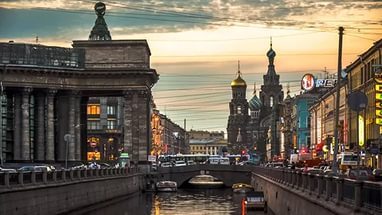
0 notes
Text
Cook & travel: Eastern Siberian delicacies Juicy Buryatian buuz and milky Tuvan tea are more than just calories for the natives of Eastern Siberia. The origins of these dishes incorporate pagan rites, the wisdom of ancient peoples and even the shape of their traditional homes.
0 notes
Text
Made in Russia You’ve been living in Russia for a long time, traveling a lot over its cities, visiting famous theaters and classical ballets, reading many books by outstanding Russian writers… It seems you know everything about this country. Are you sure?
0 notes
Photo

0 notes
Photo
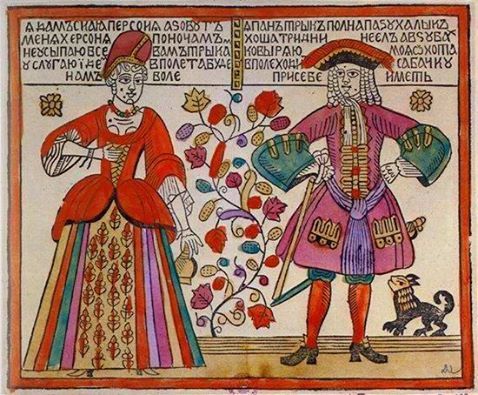
Of Russian origin: Lubok Lubok is a colored woodcut or lithographical print, usually - a sequence of pictures accompanied by simple text explaining the images, much like a page from a comic book. Nowadays, luboks can be seen only in museums, but in the 17th-19th century one could meet lubok sellers at every market. For common peasants, most of which could barely read and had no opportunity to get a book or a newspaper, luboks served as information sources, decorations and a good laugh too. People usually consider lubok being originally Russian, but this is not true. The lubok was originally invented in China. From there, it came to Europe. In the beginning of 17th century, the first “German funny paper sheets” appeared on Russian counters. Most of them were not in fact funny, and depicted saints and Biblical scenes. The Tsar and his family members hung luboks in their rooms, nobility took after the royalties and step by step luboks left the palaces and reached the huts. Russian craftsmen learned the technique and began to make prints by themselves. The first Russian luboks were black and white, but then someone came up with the idea of coloring. Artisans originally used a cheap coarse brush, but it was a difficult task and the pictures often came out rather untidy. Buyers, however, were unpretentious – they just liked bright colors and short stories. As luboks spread, their plots of pictures became less and less biblical. Among the prints, there were illustrations of tales and proverbs or folklore and heroic epics, “retellings” of newspaper articles and foreign novels. One could buy “The Story of the Wayward Son” to look at and to think about God’s mercy and wisdom, or something like “A Fireproof Man” or “Peasant Girl Marfa, Who Spent 33 Years Under the Snow and Came Out Alive”. They sound an awful lot like contemporary newspaper headlines, don’t they? People, monsters, clowns and saints on luboks usually looked kind and funny. Nobody wanted to buy something frightening. Caricatures of political figures were rather popular too. The most famous one is “How Mice Buried a Cat”. It is an illustration from a folklore tale. Once upon a time, a cat pretended to be dead, and mice decided to give him a proper burial. On the way to graveyard, the cat jumped up and ate the whole funeral procession. Where is the satire? This picture appeared soon after Peter I death, and many “mice” on it have certain resemblance to Peter’s associates. Text on the lubok also implies on Peter. By the middle of 19th century every literally every peasant decorated his home with luboks. Children used them to learn how to read. In these times, many famous Russian novels and poems were “retold” by lubok printers, so common people got to know Pushkin, Gogol, Lermontov. Although these retellings were usually primitive and inaccurate, it was venertheless very hard for a peasant to get a real book. It was around this time that a figurative meaning of the word “lubok” appeared: “bad art” or “cliche art”. Lubok “died” in the beginning of 20th century, soon after the October Revolution of 1917. Libraries and schools were opened in villages, and luboks became unnecessary. Nowadays, one can see a collection of luboks in the State Literature Museum in Moscow.
0 notes
Photo

On this day: 13 March On March 13, 1964, Joseph Brodsky, a young Soviet poet, was sentenced to five years at a labor camp for "social parasitism." His work, in the eyes of the Soviet authorities, provoked anti-government and anti-communist sentiments among the younger generation. His verses did not include the "normal" ideas of collectivism or high patriotic feelings; they spoke instead of individualism and were independent of official ideology. A famous scene from Brodsky’s trial in the Soviet court was released to the Western press: Court: And what is your profession, in general? Brodsky: I am a poet and a translator. Court: Who recognizes you as a poet? Who enrolled you in the ranks of poets? Brodsky: No one. Who enrolled me in the ranks of humankind? Court: Did you study this? Brodsky: This? Court: How to become a poet. You did not even try to finish high school where they prepare and teach? Brodsky: I didn’t think you could get this from school. Court: How then? Brodsky: I think that it… comes from God. The public prosecutor’s conclusion was univocal: “Our great nation is building communism. Only the society that has no idleness will prosper. Brodsky is far from being patriotic… For many years now he has lived the life of a parasite… He belongs to a group of people who, in a satanic way, laugh at the word ‘work’… Brodsky needs to be forced to work. He is a parasitic, rude, twerp and a dirty person. He needs to be moved out of the hero-city…” Brodsky was sentenced to five years hard labor but was released 18 months later, after protests from many prominent Soviet literary figures. In 1972 he was exiled from the Soviet Union and lived thereafter in the United States. He became hugely popular and his poems, interviews and essays appeared in numerous publications, including the New York Times Magazine, the New Yorker, Newsweek and many more. Brodsky won many awards including the Nobel Prize for Literature in 1987 and was a Poet Laureate of the United States. He died in New York in 1996 and was buried in the San Michele Island cemetery in Venice, Italy.
0 notes
Photo
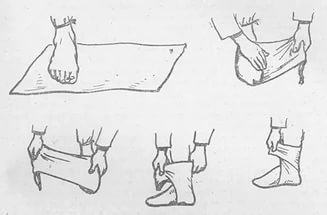
Of Russian origin: Portyanki Portyanki (singular – portyanka) are two pieces of cloth used by the soldiers in the Soviet and Russian Army instead of socks. The word sprang up from the Portuguese word which means “a piece of cloth”. The first portyanki appeared together with lapti – the shoes that that were made of the bark of the lime tree. Russian peasants used to wrap portyanki around their feet and then put lapti on. Portyanki started to be worn extensively in the army during the time of Peter the Great, who first saw them during his long stay in Holland. For the Russian Tsar, portyanki was just another item to make the Russian army look more European. Time went by and the Tsars disappeared, but portyanki stayed with the Russian and Soviet soldiers all the way through their glorious history.
0 notes
Photo

0 notes
Photo
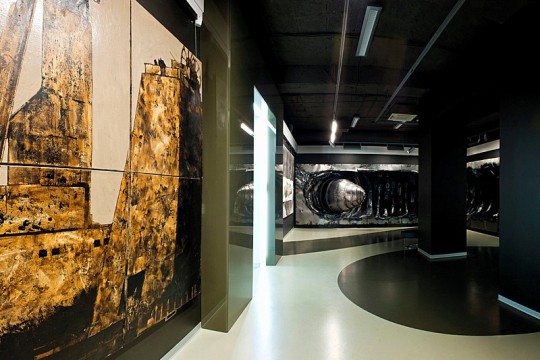
ERARTA in Saint Petersburg Erarta is the biggest global project in Russian contemporary art, a must-see attraction for gaining insight into modern Russia. In St. Petersburg, its 10,000 sq. m building brings under one roof Erarta Museum, the largest private museum in Russia, whose collection, containing 2300 works by more than 250 artists from various regions of the country, is on permanent exhibit, a commercial gallery with works available for sale and wings for temporary exhibitions, of which there are over 35 staged every year and finally, a multi-function performance hall with a maximum occupancy of 1000, which regularly hosts various events such as plays, concerts, cinema screenings as well as lectures and meetings with renowned figures from art, fashion and design worlds. Besides St. Petersburg, Erarta's commercial galleries are also established in London and Hong Kong and are dedicated to promoting contemporary Russian art on the international stage. Erarta prides itself on being visitor-oriented and has created all the necessary conditions for not only an interesting but also a pleasant and comfortable visit - state of the art interiors with all signs and texts translated into English, free Wi-Fi coverage across the entire building and friendly English-speaking staff who personify the museum's focus on service and attention to guests has led the NY Times to describe Erarta as a "familiar landscape for international visitors". On leisure and shopping fronts, the Erarta building contains a restaurant with a summer terrace, a caf? and also souvenir, print and book shops.
0 notes
Photo

Of Russian origin: Cheburashka Cheburashka is a small brown-haired animal famous for his huge ears and big eyes. He’s an entirely fictitious character from a 1965 children’s book by Russian writer Eduard Uspensky. Although some children still think they can see Cheburashka in a zoo. In 1969 Cheburashka played the main role in the first episode of a cartoon series by Soyuzmultfil, Russia’s major animated film studio, about … himself and his friends. According to the book, Cheburashka’s name comes from the Russian verb “cheburakhnutsya” meaning “to topple.” For example, after he ate too many oranges during his trip in the box and his legs became numb, he couldn’t stand and toppled over every time. The word Cheburashka is also used to indicate a cork-tumbler or a tilting doll.
0 notes
Photo
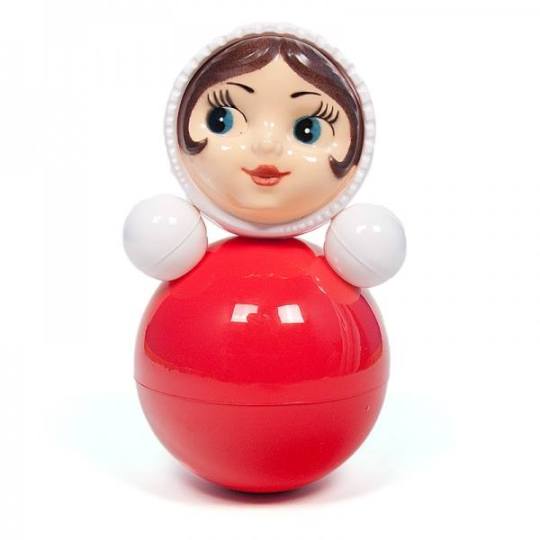
0 notes
Text
10 facts about the legendary Mir space station The first module of the famous Soviet station, Mir, was launched into orbit on February 20, 1986. The experience of its creation 30 years ago was later used to develop the International Space Station (ISS), while its plunge to the Pacific Ocean sparked rumors of a mysterious space bacteria. Here are other little-known facts about the Mir station: 1. Mir's construction involved 280 Soviet state companies, but it took the efforts of senior party officials to finish it because by 1984 a great amount of resources had been put into the Buran space shuttle program, while work on Mir had been frozen. 2. Mir was the first major international station and a symbol of friendship between astronauts from different countries. It was visited by crews from the U.S., Japan, the U.K., France, Bulgaria and many other countries. Mir's first foreign guest was Syrian astronaut, Muhammed Faris, in 1987. 3. Mir hosted more than 23,000 scientific experiments. As a result, scientists learned to more accurately predict earthquakes by detecting bursts of charged particles, and they tested the production of new metals and alloys in zero gravity. 4. Mir's astronauts performed more than 78 spacewalks for a total time of 359 hours and 12 minutes. There are still rumors that Mir was plunged into the Pacific Ocean because of a mysterious cosmic bacteria that appeared after a spacewalk. 5. Launched in 1986, the station consisted of only a base block. Later, there were additions – living quarters, laboratories, and a module for docking with the U.S. space shuttles. 6. Mir was the first modular design of an orbital complex, which was later used in the development of the ISS. 7. Mir conducted the first study of the effects of long term weightlessness on human behavior, which helped us to understand the reaction of the human body and mind in interplanetary travel. 8. Radiation research on Mir helped to predict the dynamics of changes in radiation fields. This is how scientists were able to determine the exact years of intense radiation hazard for future space missions. 9. Mir was designed for five years of operation, but the station lasted three times its planned lifetime. 10. During its 15 years, Mir was the world's only space laboratory for testing and training for future manned stations, such as the ISS.
0 notes
Link
#Peterhof#russia tour packages#russian river cruises#top 10 tourist attractions#places in russia#tourist attractions in Russia#russia travel guide
0 notes
Text
Of Russian origin: Vanka-Vstanka“
Weebles wobble but they don’t fall down!” was the famous catchphrase from the American roly-poly toy coined in the 1970’s. However, even though it was the middle of the Cold War, roly-poly toys were busy wobbling and standing up in the Soviet Union and the Eastern Bloc, too. The Nevаlashka or Vanka-Vstanka doll of Russia was just one incarnation of the popular egg shaped toy which, with a weight in the bottom was pushed by a child then wobbled back to a stand. Most households during the Soviet Union had a Vanka-Vstanka for the children to play with. It was also a popular boy’s name meaning, ‘get up!’ which is precisely what it did! Roly-poly toys have entered cultures around the world. In China, they’re often designed as a clownish caricature of a local official, mocking the ineptitude of local bureaucrats. One theatre group dresses up an actor as a roly-poly toy for the audience to interact with. And the author Enid Blyton created the characters Mr and Mrs Wobblyman based on the swaying playthings. With a bell inside ringing to the child’s pushes, Vanka-Vstankas, and their worldwide incarnations remain popular toys to this day. Kjoi- Visa-free shore excursions and land traveler's tours
#kjoy.travel#Russian tour#St. Petersburg#Moscow#Students' tours#St. Petersburg customized tour#tour to St. Petersburg#private tour in St. Petersburg#St. Petersburg tour guide#shore excursions in St. Petersburg
0 notes